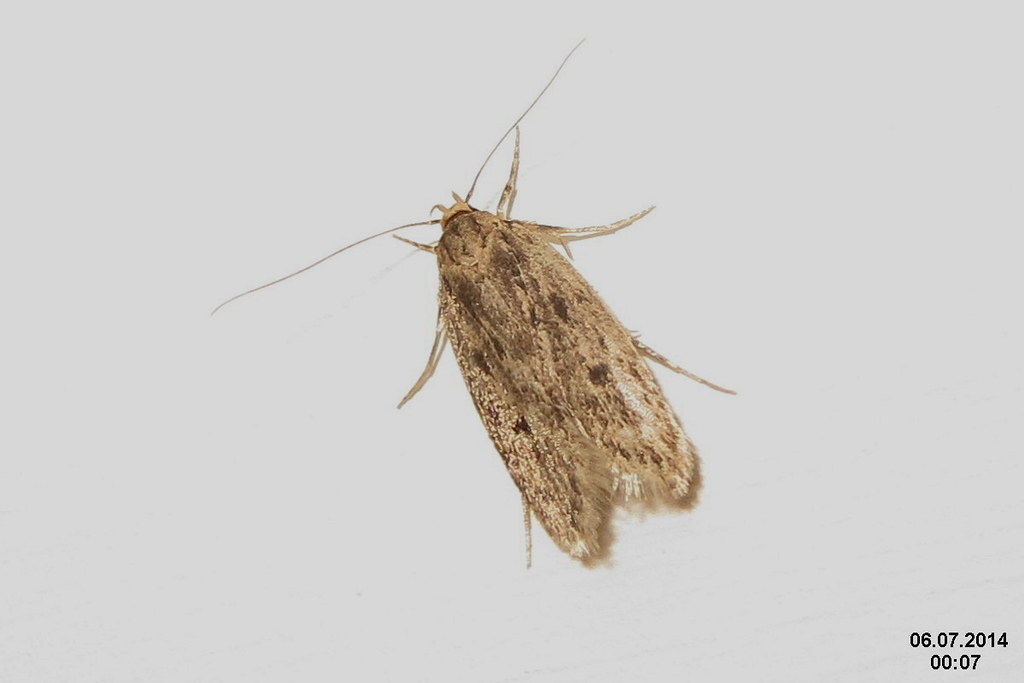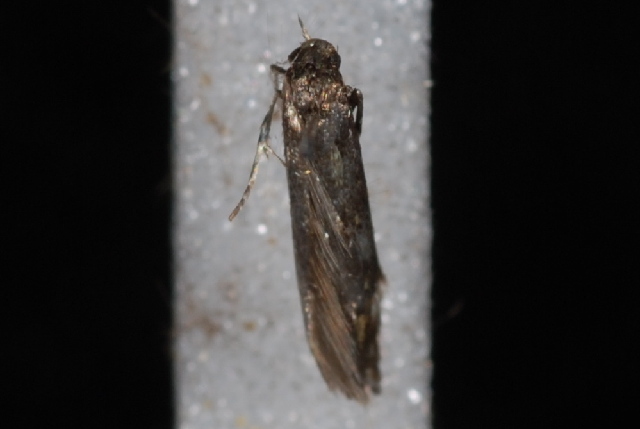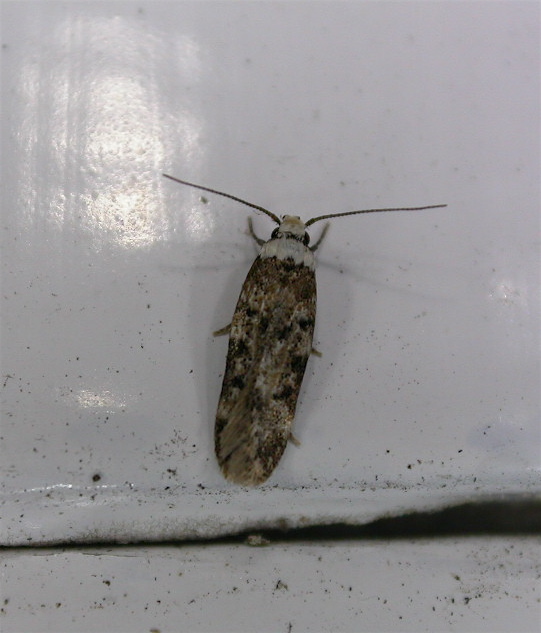Preventing Brown House Moth Infestations in Your Home
Introduction
What are Brown House Moths?
Brown House Moths, also known as Hofmannophila pseudospretella, are a common household pest that can cause significant damage to your home. These moths are small in size, with a wingspan of about 15-20 mm. They are light brown in color and have a distinctive pattern of dark spots on their wings. Brown House Moths are attracted to stored food products, particularly grains, cereals, and dried fruits. They lay their eggs on these food sources, and the larvae feed on the food, causing contamination and spoilage. Infestations can quickly spread throughout your home, infesting pantries, cupboards, and other areas where food is stored. It is important to take preventive measures to avoid brown house moth infestations and protect your home from damage.
Why are Brown House Moths a Problem?
Brown house moths can be a nuisance and a problem in homes. They are known to infest food storage areas and pantry shelves, causing damage to stored goods. These moths are attracted to a variety of food sources, including grains, cereals, and dried fruits. Once they establish a presence in your home, they can quickly multiply and become difficult to eradicate. Brown house moths can also contaminate food with their larvae and feces, posing a health risk to you and your family. Therefore, it is important to take preventive measures to avoid brown house moth infestations in your home.
The Importance of Preventing Infestations
Infestations of brown house moths can cause significant damage to your home and belongings. These pests are known for their ability to feed on a variety of materials, including fabrics, carpets, and stored food. Not only can they ruin your favorite clothes and furniture, but they can also contaminate your pantry items, making them unsafe to consume. Additionally, brown house moths can reproduce rapidly, leading to a full-blown infestation in no time. Therefore, it is crucial to take preventive measures to keep these pests out of your home and protect your property from their destructive habits.
Identifying Brown House Moths
Physical Characteristics
The Physical Characteristics of the Brown House Moth are an important aspect to understand in order to prevent infestations in your home. These moths are small in size, measuring around 8-14 mm in length. They have a light brown color with darker markings on their wings. The adult moths have a characteristic resting posture, with their wings folded tightly against their body. The larvae of the Brown House Moth are creamy-white in color and can grow up to 10-15 mm in length. They have a distinct head capsule and are often found in dark, undisturbed areas such as closets, pantries, and basements. By being aware of these physical characteristics, you can identify and take necessary measures to prevent Brown House Moth infestations in your home.
Behavior and Habits
The behavior and habits of brown house moths play a crucial role in infestation prevention. These moths are primarily nocturnal and are attracted to sources of light. They are known to be attracted to food sources such as grains, cereals, and pet food. Therefore, it is important to store these items in airtight containers to minimize the risk of infestation. Additionally, brown house moths are capable of laying a large number of eggs, which can quickly lead to an infestation if not addressed. Regular cleaning and vacuuming of your home, especially in areas where food is stored, can help remove any potential eggs or larvae. By understanding the behavior and habits of brown house moths, you can take proactive measures to prevent infestations in your home.
Signs of Infestation
Signs of infestation by brown house moths can be easily identified if you know what to look for. One of the most common signs is the presence of adult moths flying around your home, especially in the evening or at night. You may also notice small, brownish moths resting on walls or ceilings during the day. Another telltale sign is the presence of moth larvae, which are small, white worms that can be found in food storage areas, such as pantries or kitchen cabinets. These larvae can cause damage to food packages and leave behind webbing or silk-like threads. Additionally, you may come across tiny eggs, which are usually laid on surfaces near food sources. If you notice any of these signs, it is important to take immediate action to prevent a full-blown infestation and protect your home from further damage.
Common Infestation Areas
Kitchen and Pantry
The kitchen and pantry are common areas in the home where brown house moths can infest. These pests are attracted to food sources such as grains, cereals, flour, and dried fruits. To prevent brown house moth infestations in your kitchen and pantry, it is important to store food items in airtight containers. This will help to eliminate their access to potential food sources. Additionally, regularly clean your pantry shelves and discard any expired or infested food items. Keeping your kitchen and pantry clean and organized will make it less appealing for brown house moths to thrive and reproduce.
Closets and Wardrobes
Closets and wardrobes are common areas where brown house moths can infest. These pests are attracted to dark, warm, and undisturbed spaces, making closets and wardrobes the perfect breeding grounds for them. To prevent infestations, it is important to regularly clean and declutter these areas. Vacuuming the floors, wiping down shelves, and inspecting clothing for any signs of moth activity are essential steps. Additionally, using moth repellents such as cedar blocks or lavender sachets can help deter moths from entering your closets and wardrobes. By taking these preventive measures, you can ensure that your clothes and belongings are protected from brown house moth infestations.
Garage and Basement
Garage and basement areas are common hotspots for brown house moth infestations. These areas often provide the ideal conditions for moths to thrive, including darkness, moisture, and a steady food source. To prevent infestations in these areas, it is important to keep them clean and well-organized. Regularly inspect and clean out any stored items, as moths are attracted to organic materials such as cardboard boxes, fabrics, and old papers. Seal any cracks or openings that may serve as entry points for moths. Additionally, consider using moth repellents or traps in these areas to further deter infestations. By taking these preventive measures, you can effectively reduce the risk of brown house moth infestations in your garage and basement.
Preventive Measures
Proper Food Storage
Proper food storage is essential in preventing brown house moth infestations in your home. These pests are attracted to food sources such as grains, cereals, and dried fruits. To keep them at bay, it is important to store these items in airtight containers. This not only prevents the moths from accessing the food but also keeps it fresh for a longer period. Additionally, regularly cleaning and inspecting your pantry can help identify any signs of infestation early on. By practicing proper food storage techniques, you can effectively safeguard your home from brown house moth infestations.
Regular Cleaning and Maintenance
Regular cleaning and maintenance are essential in preventing brown house moth infestations in your home. By regularly cleaning and decluttering your living spaces, you can eliminate potential hiding spots and breeding grounds for these pests. Vacuuming carpets, rugs, and upholstery on a weekly basis can help remove any moth eggs or larvae that may be present. Additionally, it is important to regularly inspect and clean your pantry, as moths are attracted to stored food items. By maintaining a clean and organized home, you can significantly reduce the risk of a brown house moth infestation.
Sealing Entry Points
Sealing entry points is a crucial step in preventing brown house moth infestations in your home. These pests can easily enter your living space through small cracks and gaps in windows, doors, and walls. By sealing these entry points, you create a barrier that prevents the moths from gaining access to your house. Use caulk or weatherstripping to seal any visible cracks or gaps, paying close attention to areas around windows and doors. Additionally, inspect your home regularly for any new entry points that may have developed over time and seal them promptly. Taking these proactive measures will greatly reduce the likelihood of brown house moth infestations and help maintain a pest-free environment in your home.
Natural Remedies
Herbs and Essential Oils
Herbs and essential oils can be effective natural remedies for preventing brown house moth infestations in your home. Certain herbs, such as lavender, rosemary, and peppermint, are known for their strong scents that repel moths. You can place sachets filled with dried herbs in your closets, drawers, and pantry to deter moths from entering. Additionally, essential oils extracted from these herbs can be diluted in water and sprayed around your home to create a moth-repellent barrier. The strong aroma of these oils will discourage moths from settling in your living spaces. By incorporating herbs and essential oils into your home, you can take a proactive approach to prevent brown house moth infestations and maintain a moth-free environment.
Cedar and Lavender
Cedar and lavender are two natural remedies that can help prevent brown house moth infestations in your home. Both cedar and lavender have strong aromatic properties that moths find repulsive. Placing cedar blocks or sachets in your closets and drawers can act as a deterrent, as the scent of cedar is known to repel moths. Similarly, dried lavender can be used in the same way to keep moths away. The pleasant fragrance of lavender not only adds a fresh scent to your home but also serves as a natural moth repellent. By incorporating cedar and lavender into your home, you can effectively ward off brown house moths and protect your belongings from damage.
Moth Traps and Repellents
Moth traps and repellents are effective tools for preventing brown house moth infestations in your home. Moth traps are designed to attract and capture adult moths, preventing them from laying eggs and reproducing. These traps are typically baited with pheromones that mimic the scent of female moths, luring males into the trap. Repellents, on the other hand, work by creating a barrier that deters moths from entering your home. They often contain natural ingredients such as lavender or cedar, which are known to repel moths. Using a combination of moth traps and repellents can help significantly reduce the risk of brown house moth infestations in your home, keeping your living spaces moth-free and protecting your belongings from damage.
Professional Pest Control
When to Seek Professional Help
If you have tried various methods to get rid of brown house moths in your home but have not been successful, it may be time to seek professional help. Pest control professionals have the knowledge and expertise to effectively eliminate moth infestations and prevent them from returning. They can assess the extent of the infestation, identify the source of the problem, and recommend the most suitable treatment options. Additionally, professionals can provide valuable advice on how to prevent future infestations and maintain a moth-free home. Don’t hesitate to reach out to a professional if you are struggling to control brown house moths on your own.
Choosing a Pest Control Service
When it comes to choosing a pest control service for preventing brown house moth infestations in your home, there are several factors to consider. Firstly, it is important to research and select a reputable and experienced pest control company. Look for a service provider that specializes in moth control and has a proven track record of successfully eliminating infestations. Additionally, consider the methods and products used by the pest control service. Opt for a company that uses environmentally-friendly and safe pest control solutions to protect your home and family. Finally, don’t forget to inquire about the warranty and follow-up services offered by the pest control service. It is crucial to choose a service provider that stands behind their work and offers ongoing support to ensure long-term prevention of brown house moth infestations in your home.
Preventive Maintenance
Preventive maintenance is crucial in preventing brown house moth infestations in your home. By regularly inspecting and cleaning your living spaces, you can identify and eliminate potential breeding grounds for these pests. Keep your home clean and free of clutter, as moths are attracted to dark and undisturbed areas. Vacuuming regularly and properly storing food in airtight containers can also help deter moths from infesting your pantry. Additionally, sealing any cracks or gaps in your home’s exterior can prevent moths from entering and establishing a nest. By implementing these preventive measures, you can significantly reduce the risk of brown house moth infestations and maintain a pest-free home.










